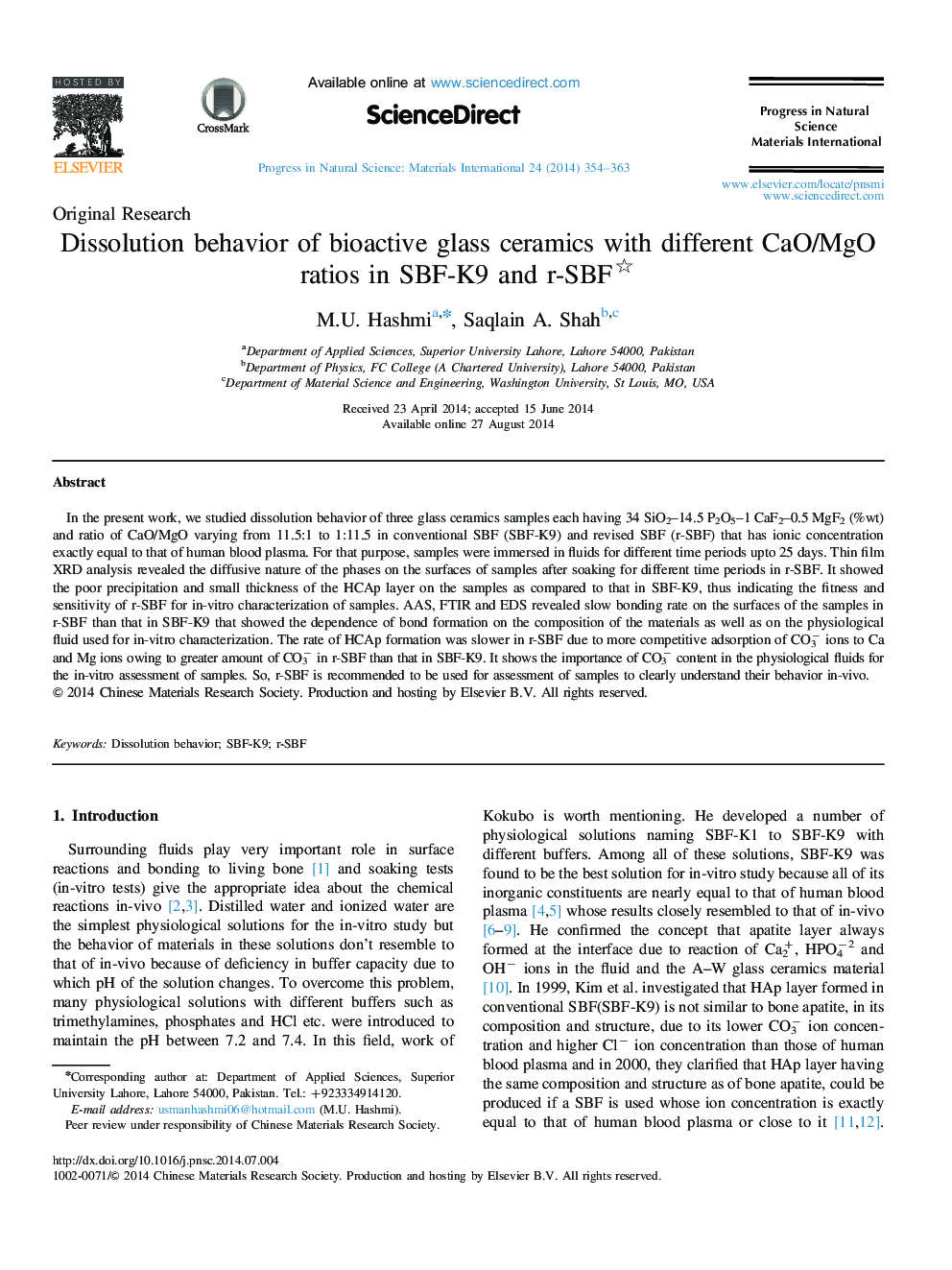| Article ID | Journal | Published Year | Pages | File Type |
|---|---|---|---|---|
| 1548176 | Progress in Natural Science: Materials International | 2014 | 10 Pages |
Abstract
In the present work, we studied dissolution behavior of three glass ceramics samples each having 34Â SiO2-14.5Â P2O5-1Â CaF2-0.5Â MgF2 (%wt) and ratio of CaO/MgO varying from 11.5:1 to 1:11.5 in conventional SBF (SBF-K9) and revised SBF (r-SBF) that has ionic concentration exactly equal to that of human blood plasma. For that purpose, samples were immersed in fluids for different time periods upto 25 days. Thin film XRD analysis revealed the diffusive nature of the phases on the surfaces of samples after soaking for different time periods in r-SBF. It showed the poor precipitation and small thickness of the HCAp layer on the samples as compared to that in SBF-K9, thus indicating the fitness and sensitivity of r-SBF for in-vitro characterization of samples. AAS, FTIR and EDS revealed slow bonding rate on the surfaces of the samples in r-SBF than that in SBF-K9 that showed the dependence of bond formation on the composition of the materials as well as on the physiological fluid used for in-vitro characterization. The rate of HCAp formation was slower in r-SBF due to more competitive adsorption of CO3â ions to Ca and Mg ions owing to greater amount of CO3â in r-SBF than that in SBF-K9. It shows the importance of CO3â content in the physiological fluids for the in-vitro assessment of samples. So, r-SBF is recommended to be used for assessment of samples to clearly understand their behavior in-vivo.
Keywords
Related Topics
Physical Sciences and Engineering
Materials Science
Electronic, Optical and Magnetic Materials
Authors
M.U. Hashmi, Saqlain A. Shah,
